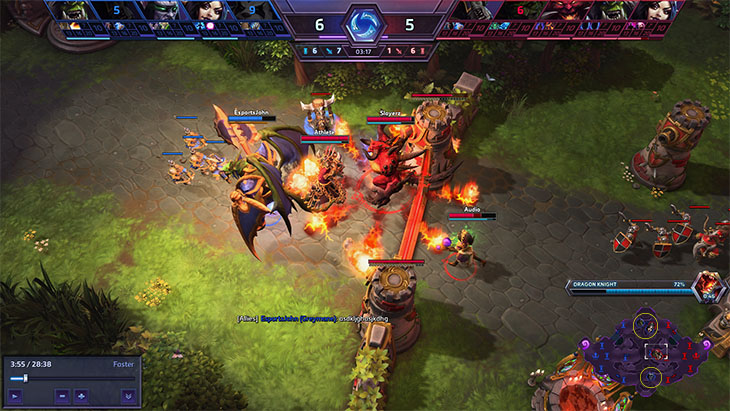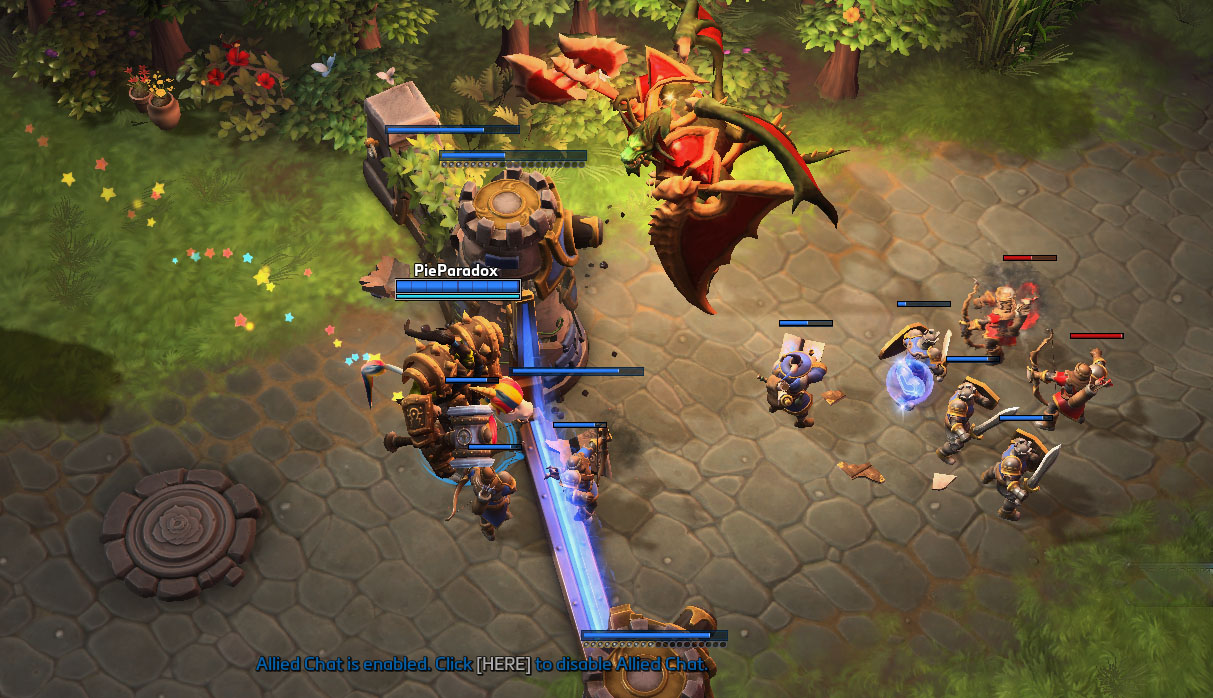Heroes of the Storm is well known for its unique map objectives, forcing teams to work together to achieve victory. Whether it be to summon a Punisher, channel a Temple’s power or even to capture tributes and gain the Raven Lord’s favor, it all comes down to teamwork. The map Dragon Shire dates back to the Heroes alpha and revolves around capturing two shrines in order to summon the fearsome Dragon Knight (DK) to destroy the enemy’s towers and forts. A large portion of playing games on Dragon Shire revolves around precise rotations in order to control the shrines in both top and bottom lane while still finding time to channel the DK’s essence in the center of the map. Nonetheless, it’s still quite easy to let that advantage go to waste by using the DK improperly.
The most important factor for controlling the DK is knowing what your role is. In short, you should always use the DK to look for opportunities to create a favorable push somewhere on the map. In the early game, the DK is best used to collect experience to get to level 10 faster. The goal for the first DK or two is usually to get as many front walls and towers down as possible by creating several nodes of pressure, usually in a 1-1-3 pattern to maximize experience soak. The DK alone can take down a full wall and towers if left unattended, so he usually draws two or three of your opponents toward him, which in turn allows your team to set up a successful 3-man push somewhere else on the map. The last person on your team typically plays passively in another lane to gain additional EXP. Forts provide only as much experience as the towers but are much more difficult to push into, so towers only should generally be prioritized early on.

In the later stages of the game, the DK’s damage ramps up quite a bit, particularly after 20:00, allowing your team to make strong pushes onto forts and keeps. Usually this is done as a 5-man push, but a 4-1 split also works if you have a good split pusher like Falstad or Brightwing who can jump into the fray at a moment’s notice. After approximately 24:00, the DK is unbelievably strong and almost guaranteed to get a keep or win on Core as long as you have a little bit of support.
Knowing where you’re supposed to go is a large part of controlling the DK, but execution using this new quasi-Hero is also important. Once you have control of the Dragon Knight and you’ve decided on your destination, there are a few key rules to follow to ensure that you make the most of your journey.
1. Don’t take too much free damage on the Dragon Knight
It’s imperative that you avoid suiciding the Dragon Knight into an enemy fort just to “do damage”. It’s a free healthbar, but it’s still an important healthbar, and using it carelessly can result in throwing away your advantage for almost nothing in return. Many low level players make the mistake of thinking that they need to immediately start doing damage to enemy structures, but avoiding damage is a key way of making sure the DK lives longer and does more damage overall. Push up the minion wave to tank tower shots and try to avoid taking shots from forts in particular because they slow your attack speed and overall DPS. Sometimes it’s better to wait for your team to catch up and sit in the lane for a bit, even if it feels like “you’re not doing anything”. Patient players will be able to get a lot more out of the DK.

2. Avoid using the charge ability except for strategic purposes
The windup for the DK’s charge is long and lowers your overall DPS to structures. Though this is less of a problem in the latest patch where the windup time was decreased significantly, it’s still important to use it intelligently rather than just spamming it on cooldown. This ability is particularly useful for knocking away big damage dealers that would burn down the DK’s hitpoints quickly, but can also be used to knock away tanks to let your team hard engage onto the back line or to punt Heroes with important Heroics away so that the enemy team can’t fight you while you’re killing their structures.
3. Don’t abandon your team to push buildings
The DK is an excellent siege tool, and abandoning the team in a teamfight to attack a building is a common mistake that players make. Instead, make sure to stick with your team and make the most out of your pushes. His fire breath does a lot of damage and can zone out squishy backline targets if necessary. Even though his attacks do more damage to buildings, attacking Heroes isn’t out of the question, especially at later levels when the DK does a lot of damage regardless. If an enemy Hero is out of position near you, don’t be afraid to pile some of your damage onto that Hero first and ensure the kill before pushing down buildings.
4. Level 20+ Dragon Knights are way more powerful
After level 20, the DK starts scaling exponentially and becomes extraordinarily strong, so keep that in mind when you control the DK. If the game goes late enough, you can actually just right-click an exposed Core with your team for an easy win. All of his damage gets amplified too, so winning team fights with the DK is also much easier than before. Nonetheless, there’s no reason to ignore the other rules. Stick with your team and don’t just bully your way into their base without some backup. Just remember where your advantages lie and don’t forget that level 20+ DKs are scary.
You May Like
Once you get a better sense of where you’re needed, controlling the Dragon Knight should be a piece of cake. Like anything in the game, it takes time to learn how to make the correct judgment calls, but you’ll improve rapidly if you follow these simple rules and remember your role throughout the game.












